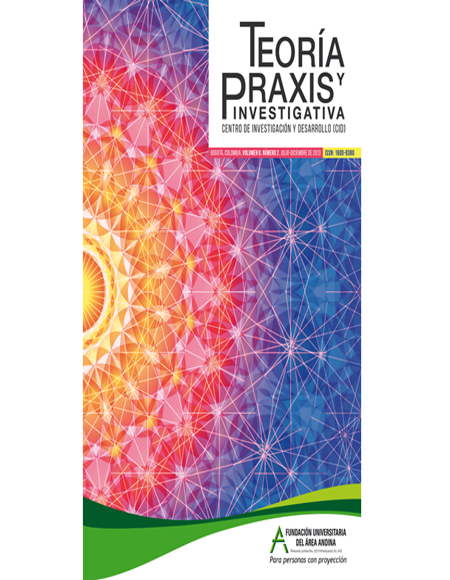Abstract
Con el objetivo de diseñar e implantar un método de alimentación en avestruces en etapa reproductiva, se utilizaron 18 tríos (2 hembras y 1 macho), asignados en un diseño de bloques completos al azar con un arreglo de parcelas divididas, y alimentados con tres dietas a base de combinaciones de forraje; La dieta I o Control, Dieta II y Dieta III. Utilizando dos formas de suministros: Simultáneo (Concentrado más forraje) y Fraccionado (Concentrado primero y forraje a media mañana). Este estudio buscó mejorar los índices de producción (Consumo de alimento, producción de huevos y aumento de postura) y los índices reproductivos (% de fertilidad, incubabilidad, mortalidad embrionaria, nacimientos) El consumo no marcó diferencias (P < 0.05) entre dietas ni para formas de suministro, sin embargo, la dieta III fue la de menor consumo y la dieta II, la de mayor consumo. En cuanto a producción de huevos, la dieta III alcanzó una producción total de 70 huevos, y una conversión alimenticia de 2.12 kg, mientras que la dieta II produjo 23 huevos, y una conversión de 4.68 kg. En la interacción con la forma de suministro, la dieta III suministrada imultáneamente obtuvo 59 Kg de huevo, una conversión alimenticia de 2,9 Kls. En incubabilidad hubo diferencias altamente significativas entre dietas (P < 0.01), La dieta III alcanzó el mayor porcentaje (55.95%). Para la forma de suministro no se encontraron diferencias (P > 0.05). El % fertilidad no mostró diferencias (P < 0.05), sin embargo, la dieta III presentó el más alto porcentaje e fertilidad (89.9%) y el más bajo lo alcanzó la dieta II (33.3%). En cuanto a la forma de suministro, no se encontraron diferencias (P < 0.05). En el % de mortalidad embrionaria no se encontraron diferencias entre dietas, ni forma de suministros (P < 0.05). En el porcentaje de nacimiento de Polluelos se encontraron diferencias (P < 0.01) entre las dietas, La dieta III, presentó el valor más alto, 50.16%, mientras que el menor porcentaje corresponde a la dieta I. Para formas de suministro, el porcentaje de nacimiento de polluelos no presentó diferencias significativas (P > 0.05). En síntesis, la dieta III presentó los mejores rendimientos productivos en las variables analizadas.
Abstract
In order to design and implement a feeding method in ostriches in reproductive stage, there were used 18 trios (2 females and 1 male), assigned in a design of finished blocks at random with an arrangement of divided plots, and fed with three diets by means of forage combinations; The diet I or Control, Diet II and Diet III. Using two forms of provisions: Simultaneous (Concentrated more forage) and Divided (the first Concentrate and forage at about 11 a.m.). This study thought about how to improve the indexes of production (food Consumption, eggs Production and Increase of Position) and the reproductive indexes (% of fertility, Incubabilidad, Embryonic Mortality, Births) The consumption did not mark differences (P < 0.05) between diets not for forms of supply, Nevertheless, the diet III was that of less consumption and the diet II, that of major consumption. As for eggs production, the diet III reached an entire production of 70 eggs, and 2.12 kg nutritive conversion, while the diet II produced 23 eggs, and 4.68 kg conversion. In the interaction with the form of supply, the diet III given one simultaneously obtained 59 Kg of egg, a nutritive conversion of 2,9 Kls. In Incubabilidad there were highly significant differences between diets (P <0.01), The diet III reached the biggest percentage (55.95%). For the form of supply found differences (P > 0.05). The % fertility did not show differences (P < 0.05), nevertheless, the diet III presented the highest percentage of fertility (89.9%) and the lowest reached the diet II (33.3%). As for the form of supply, there were not differences (P < 0.05). In him % of Embryonic Mortality found neither differences between diets, nor form of provisions (P < 0.05). In the percentage of birth of Chicks were differences (P < 0.01) between the diets, The diet III, presented the highest value, 50.16%, while the least percentage corresponds to the diet I. For forms of supply, the percentage of birth of chicks did not present significant differences (P > 0.05). In synthesis, the diet III presented the best productive yields in the analyzed variables.
Keywords: Diets, forages, productive indexes, reproductive indexes

 PDF (Español (España))
PDF (Español (España))
 FLIP
FLIP







